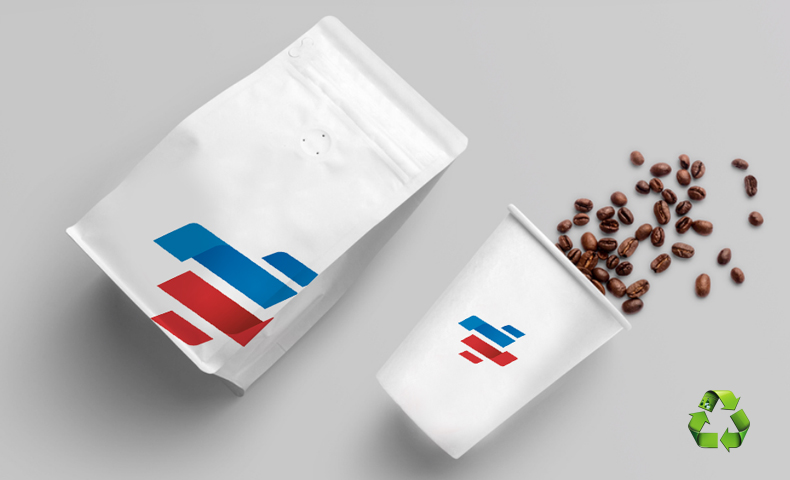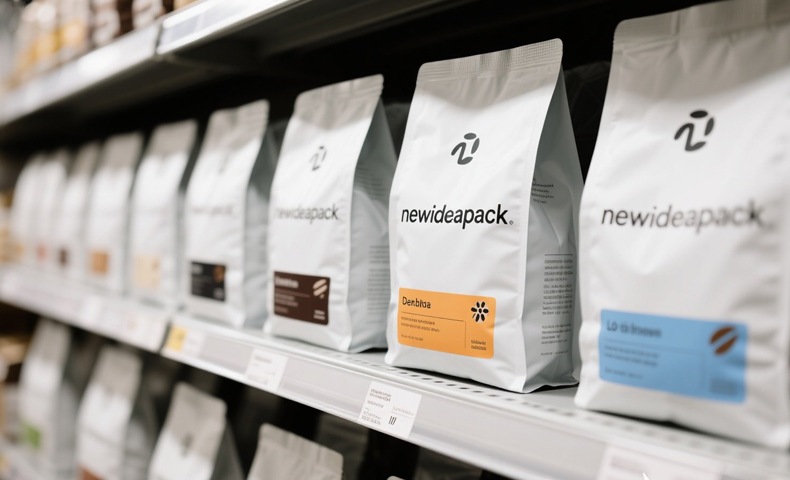How Coffee Packaging Builds Strong Brand Recognition
The way coffee packaging is designed has a huge impact on how the brand is perceived. It is often the first thing a customer notices, and it can significantly influence their decision to purchase. Packaging has the power to build or diminish brand recognition, setting the tone for the overall experience with the product.
In this article, we explore how coffee packaging plays a crucial role in shaping brand identity and improving recognition among consumers.
1. How Does Coffee Packaging Impact Brand Recognition?
Coffee packaging plays a vital role in a brand’s recognition, as it’s the first point of contact between the consumer and the product. The look and feel of the packaging can immediately communicate the quality and values of the brand. Consumers often make split-second decisions based on visual cues provided by packaging. For example, minimalist designs might signal a premium brand, while vibrant colors could appeal to a younger, more energetic demographic.
Table: The Role of Packaging in Building Brand Recognition
| Packaging Feature | Effect on Consumer Recognition | Example |
|---|---|---|
| Design & Aesthetics | The design attracts attention and communicates quality | A sleek, minimalist design for premium coffee brands |
| Color & Texture | Creates emotional connections and influences perceptions | Bright colors for fun, casual coffee brands versus muted tones for traditional brands |
| Branding Consistency | Reinforces the brand across different products and experiences | Consistent use of logos, fonts, and colors on all packaging |
2. What Elements of Coffee Packaging Are Essential for Brand Recognition?
To build strong brand recognition, several key elements of coffee packaging must align with the brand’s identity. These include design elements like logos, color schemes, fonts, and the materials used in packaging. Each of these components communicates something about the brand’s personality, quality, and values. For example, a high-end coffee brand might use gold accents and a sleek design, while an organic coffee brand might use kraft paper and earthy colors to communicate natural origins.

Table: Key Elements of Coffee Packaging for Brand Recognition
| Packaging Element | Purpose | Impact on Consumer |
|---|---|---|
| Color Palette | Conveys emotions and brand personality | Green for eco-friendly, red for energy or boldness |
| Typography | Reflects the brand’s tone and style | Elegant fonts for luxury, modern fonts for contemporary brands |
| Material | Communicates product quality and values | Sustainable materials suggest eco-consciousness, while luxurious packaging suggests premium quality |
3. How Does Consistent Coffee Packaging Build Brand Identity?
Consistency in packaging design is key to building strong brand identity. When consumers encounter the same logo, colors, and overall design style across all products, it strengthens their recognition of the brand. Consistent branding builds trust and ensures that the brand remains familiar and easily identifiable. For coffee brands, maintaining consistency in packaging not only reinforces brand recognition but also supports brand loyalty by helping consumers easily identify their favorite product.
Table: The Importance of Consistency in Coffee Packaging
| Consistency Element | Impact on Consumer Recognition | Example |
|---|---|---|
| Logo Usage | Reinforces brand identity | Consistent use of the same logo across all packaging |
| Packaging Design Style | Helps customers identify the brand easily | Using the same design style across different coffee varieties |
| Color Scheme | Creates a strong visual connection with the brand | The use of the same colors across all products strengthens brand identity |
4. Why Is Packaging the First Step in Brand Recognition?
Packaging is often the first thing that consumers notice when choosing a coffee product. It’s the first impression a consumer gets about the brand, making it a powerful tool for brand recognition. When designed effectively, packaging can create a lasting impression and spark curiosity, which often leads to a purchase. Consumers tend to associate packaging with quality, so an attractive and well-designed package may encourage them to trust the product even before tasting it.
Table: First Impressions and Coffee Packaging
| Packaging Feature | First Impressions Impact | Example |
|---|---|---|
| Visual Appeal | Consumers are drawn to attractive packaging | A beautifully designed coffee bag that catches the consumer’s eye |
| Functionality | Practical packaging builds trust and usability | Easy-to-open bags or resealable features encourage repeat purchase |
| Informational Clarity | Clear, informative packaging fosters trust | Transparent labeling with sourcing details can influence purchase decisions |
5. How Can Coffee Packaging Influence Consumer Perception of Quality?
The quality of coffee packaging directly influences how consumers perceive the quality of the product inside. Premium packaging with high-end materials and designs often signals that the coffee inside is of high quality. Conversely, plain or basic packaging might imply a more affordable product. When packaging aligns with the perceived quality of the coffee, it strengthens the overall brand message and enhances consumer trust.
Table: How Packaging Influences Perceived Quality
| Packaging Feature | Impact on Perceived Quality | Example |
|---|---|---|
| Material Quality | Premium packaging materials signal high quality | Glossy finishes and foil bags for high-end coffee |
| Design Elegance | Elegant design communicates product quality | Simple, clean lines and bold branding for premium coffee |
| Durability | Packaging that protects the coffee’s freshness reflects quality | Well-sealed, airtight bags for specialty coffee |
6. How Does Coffee Packaging Reflect Brand Values and Mission?
The packaging of coffee can be a direct reflection of the brand’s core values and mission. Brands that prioritize sustainability, for example, often opt for recyclable, biodegradable, or reusable packaging. Similarly, brands that emphasize ethical sourcing may use packaging that highlights fair trade certifications or the origins of the beans. This connection between packaging and values helps build a deeper connection with consumers who share similar beliefs.
Table: Packaging as a Reflection of Brand Values
| Brand Value | Packaging Response | Effect on Consumer Perception |
|---|---|---|
| Sustainability | Use of recyclable or biodegradable materials | Positive brand image among eco-conscious consumers |
| Ethical Sourcing | Highlighting fair trade certification | Builds trust with consumers interested in ethical consumption |
| Quality & Craftsmanship | Use of high-end materials and sleek designs | Reinforces premium positioning of the brand |
7. How Can Packaging Create an Emotional Connection with Consumers?
The emotional connection consumers feel with a brand can often be sparked by packaging. Certain colors, designs, and textures can trigger specific emotional responses. For example, a warm color palette may evoke feelings of comfort and warmth, making consumers feel at ease with their coffee choice. Packaging can also tell a story, which can emotionally connect consumers to the brand, whether it’s through the coffee’s origin, its farmers, or the process behind its production.
Table: How Packaging Evokes Emotion
| Packaging Element | Emotional Response | Example |
|---|---|---|
| Color Palette | Colors influence mood and feelings | Red for energy and passion, green for freshness |
| Textures | Different textures trigger tactile sensations | Soft-touch finishes give a premium feel, while rough textures signal eco-friendliness |
| Imagery | Pictures or illustrations tell a story | Illustrations of coffee farms can create an emotional connection with consumers |
8. How Does Coffee Packaging Appeal to Specific Consumer Segments?
Coffee packaging can be designed to cater to specific consumer segments by considering their preferences and values. For example, a luxury coffee brand might target affluent consumers with high-end packaging materials and a sophisticated design. On the other hand, a coffee brand aimed at millennials might use vibrant, quirky packaging that aligns with current trends. By understanding their target market, coffee brands can create packaging that resonates with the intended audience.
Table: Targeted Packaging for Different Consumer Segments
| Consumer Segment | Packaging Design Characteristics | Example |
|---|---|---|
| Affluent Consumers | Sleek, elegant designs with premium materials | High-end brands using gold accents and minimalist designs |
| Millennials | Fun, vibrant designs that are eco-conscious | Bold typography, playful colors, and sustainable packaging |
| Eco-Conscious Consumers | Recyclable, biodegradable packaging | Natural kraft paper, clear sustainability messaging |
9. How Does Coffee Packaging Reflect the Brand’s Authenticity?
Consumers are becoming more discerning, seeking authenticity in the brands they support. Coffee packaging is one of the most powerful ways to communicate authenticity. When packaging reflects the true values and story of a brand, it builds trust with consumers. This can be achieved by including information about the origin of the coffee beans, the sustainability efforts of the brand, or the relationship between the company and the farmers. Authentic packaging speaks directly to the consumer’s desire to support brands they feel aligned with.
Table: Authenticity in Coffee Packaging
| Authentic Packaging Feature | Impact on Consumer Trust | Example |
|---|---|---|
| Clear Origin Story | Increases transparency and builds trust | Packaging that shares the story of the farm or co-op that grows the coffee |
| Certifications & Labels | Reassures consumers about the brand’s claims | Fair trade and organic certifications prominently displayed |
| Commitment to Sustainability | Aligns with consumer values | Eco-friendly packaging, clear recycling instructions, and sustainable sourcing claims |
10. How Does Coffee Packaging Help Differentiate Brands in a Competitive Market?
In a crowded coffee market, differentiation is key. Coffee packaging is a critical tool for standing out on store shelves. Unique designs, innovative shapes, and eye-catching colors can help a brand grab attention and be remembered. Additionally, packaging that communicates a unique selling point (such as a special roasting technique or limited edition flavor) can help the brand distinguish itself from competitors. Well-differentiated packaging makes it easier for customers to identify the brand, leading to increased market share.

Table: Differentiating Coffee Brands Through Packaging
| Differentiation Strategy | Impact on Consumer Attention | Example |
|---|---|---|
| Unique Packaging Shape | Makes the brand stand out visually | Coffee bags in unique, custom shapes, such as hexagons or tubes |
| Limited Edition Packaging | Creates urgency and exclusivity | Special edition packaging for seasonal flavors |
| Innovative Features | Engages consumers and enhances product appeal | Packaging with interactive elements, like QR codes linking to the brand’s story |
11. What Are the Latest Trends in Coffee Packaging Design?
The coffee packaging industry is constantly evolving, driven by consumer preferences and environmental concerns. Current trends include minimalist designs, sustainable packaging materials, and the use of bold typography. Sustainability has become one of the most significant trends in the coffee packaging space, with more brands opting for recyclable, compostable, and biodegradable packaging solutions. Additionally, packaging is becoming more interactive, with features like QR codes and augmented reality being used to engage consumers and provide more product information.
Table: Current Trends in Coffee Packaging Design
| Trend | Description | Impact on Consumer Engagement |
|---|---|---|
| Minimalist Design | Focus on clean, simple, and elegant designs | Appeals to consumers looking for modern, understated packaging |
| Eco-Friendly Materials | Use of recyclable, compostable, or biodegradable materials | Positive brand image for environmentally conscious buyers |
| Interactive Packaging Features | Use of digital features like QR codes or AR | Enhances customer experience and fosters brand loyalty |
12. How Can Coffee Packaging Support Sustainable Brand Messaging?
Sustainability is no longer just a buzzword; it is an expectation for many consumers. Coffee brands that use sustainable packaging materials show their commitment to the environment and help build a strong connection with eco-conscious consumers. Using biodegradable or recyclable materials not only reduces the environmental impact but also aligns the brand’s values with the growing demand for sustainable practices. Sustainable packaging solutions might include compostable bags, glass jars, or reusable containers.

Table: Sustainable Coffee Packaging Options
| Sustainable Packaging Option | Benefit for the Brand | Example |
|---|---|---|
| Biodegradable Bags | Reduces environmental footprint | Compostable coffee bags made from plant-based materials |
| Recyclable Materials | Supports a circular economy | Coffee packaging made from recycled paper or plastic |
| Reusable Containers | Encourages consumer retention and sustainability | Glass or metal containers that can be reused for storage |
13. How Can Coffee Packaging Design Improve the Customer Experience?
The design of coffee packaging goes beyond aesthetics—it plays a pivotal role in the customer experience. Packaging that is easy to open, resealable, and convenient enhances the usability of the product. Coffee brands can improve the customer experience by offering packaging that protects the freshness of the coffee, facilitates easy handling, and enhances the overall enjoyment of the product. Additionally, packaging that is easy to store can influence how often customers choose a particular brand over others.
Table: Enhancing Customer Experience Through Packaging
| Customer Experience Feature | Impact on Product Enjoyment | Example |
|---|---|---|
| Resealable Packaging | Keeps coffee fresh for longer | Resealable coffee bags that maintain freshness |
| Convenient Opening | Provides a smooth, easy access to the product | Easy-to-tear or pull-tab coffee packaging |
| Compact Design | Saves space and is easy to store | Slim packaging designs that are easy to store in cabinets |
14. What Challenges Do Coffee Brands Face in Packaging Design?
Despite the significant role packaging plays in brand recognition and customer loyalty, coffee brands face challenges in designing packaging that meets all the necessary criteria. Brands must balance aesthetics with functionality, ensuring that packaging is not only visually appealing but also practical for the consumer. Sustainability challenges, such as sourcing eco-friendly materials without raising production costs, also complicate packaging design. Lastly, brands must navigate complex regulations regarding labeling, food safety, and environmental impact.
Table: Challenges in Coffee Packaging Design
| Challenge | Impact on the Brand | Solution |
|---|---|---|
| Balancing Aesthetics and Functionality | Packaging must be both attractive and functional | Use designs that protect the product while still appealing to consumers |
| Sustainability vs. Cost | Sustainable packaging can be expensive | Research cost-effective alternatives and bulk sourcing of eco-friendly materials |
| Regulatory Compliance | Packaging must meet legal standards | Work with legal teams to ensure packaging complies with all regulations |
15. How Can Coffee Brands Measure the Impact of Packaging on Brand Recognition?
Once a brand has implemented its packaging design, measuring its effectiveness is crucial. Brands can track consumer perceptions through surveys, focus groups, or social media feedback. Monitoring sales data and market share growth can also provide insights into how well the packaging resonates with consumers. Consumer engagement with packaging (e.g., participation in contests or sharing packaging on social media) can be a key indicator of success.
Table: Measuring the Impact of Packaging on Brand Recognition
| Measurement Tool | Purpose | Example |
|---|---|---|
| Consumer Surveys | Gather direct feedback from customers | Online surveys to assess consumer opinions on new packaging designs |
| Sales Data Analysis | Track sales growth linked to packaging changes | Analyzing sales data before and after packaging redesign |
| Social Media Engagement | Measure consumer interaction with packaging | Tracking the number of social media posts tagged with packaging-related hashtags |
FAQ Section
Q1: What is brand recognition in coffee packaging?
Answer: Brand recognition in coffee packaging refers to the ability of consumers to identify a brand based on its packaging design, which includes logos, color schemes, and material choices.
Q2: How does packaging affect a coffee brand’s identity?
Answer: Packaging serves as a visual representation of a coffee brand, conveying its quality, values, and unique characteristics to consumers, thereby helping to establish and reinforce brand identity.
Q3: What role does packaging play in customer loyalty?
Answer: Packaging can foster customer loyalty by consistently delivering a positive and functional experience, enhancing the product’s perceived quality, and aligning with the consumer’s values, such as sustainability.
Q4: How do coffee brands differentiate themselves with packaging?
Answer: Coffee brands differentiate themselves through unique packaging designs, innovative features, and aligning the packaging with their target consumer segment’s preferences, making them stand out on crowded shelves.
Q5: Why is sustainable packaging important for coffee brands?
Answer: Sustainable packaging aligns with consumer preferences for eco-conscious products, enhances the brand’s reputation, and reduces environmental impact, making it a critical factor in attracting environmentally-minded consumers.
